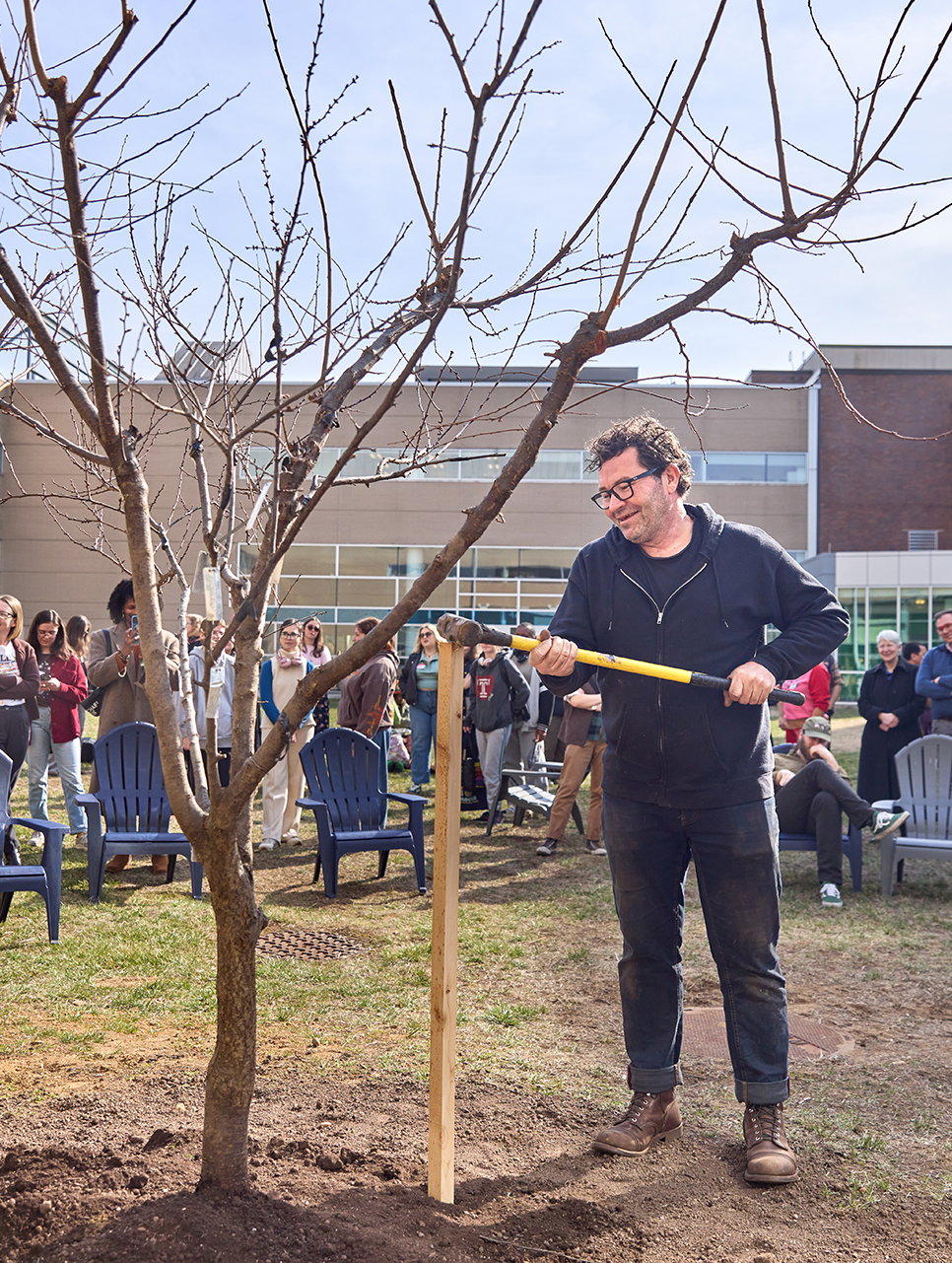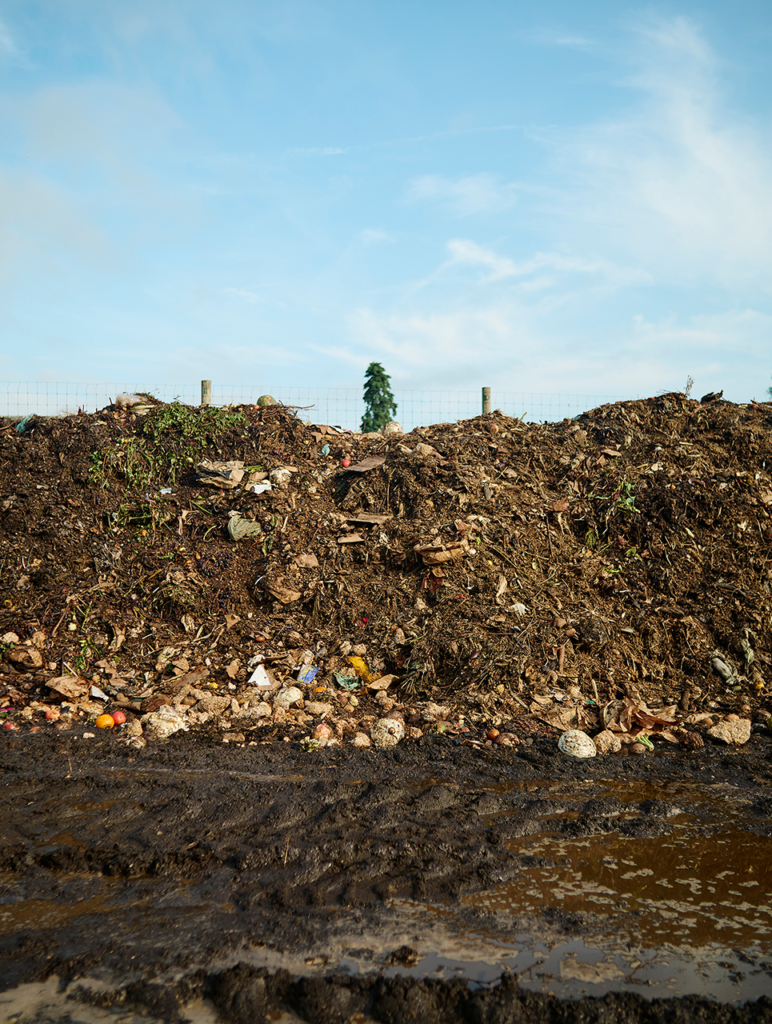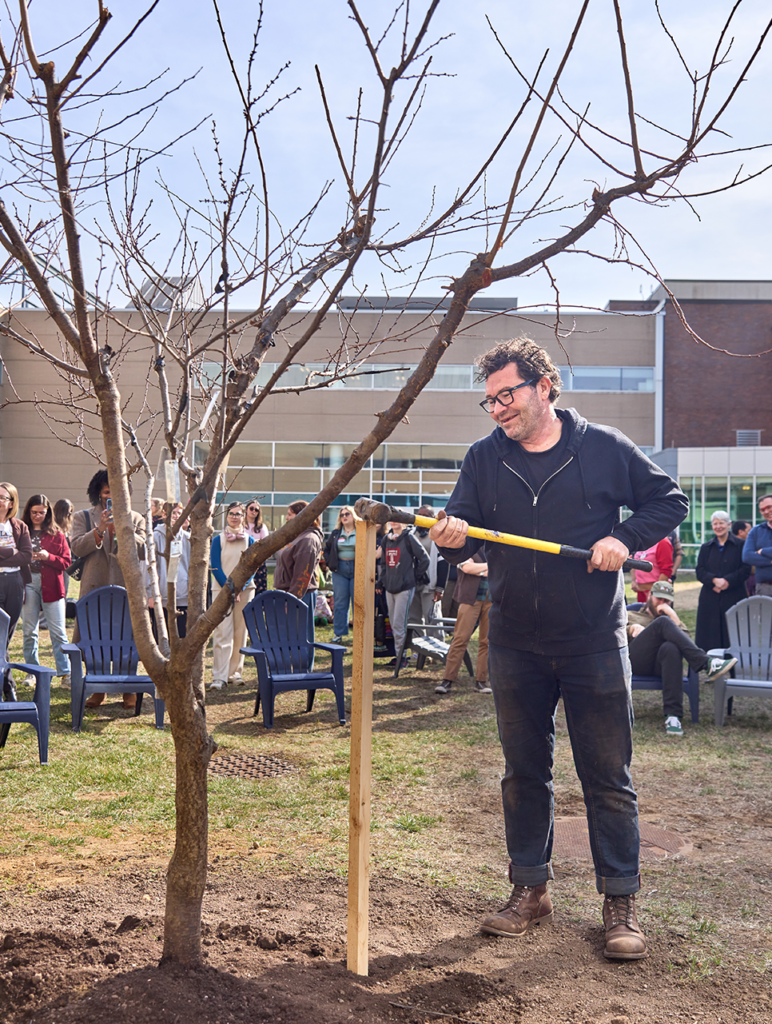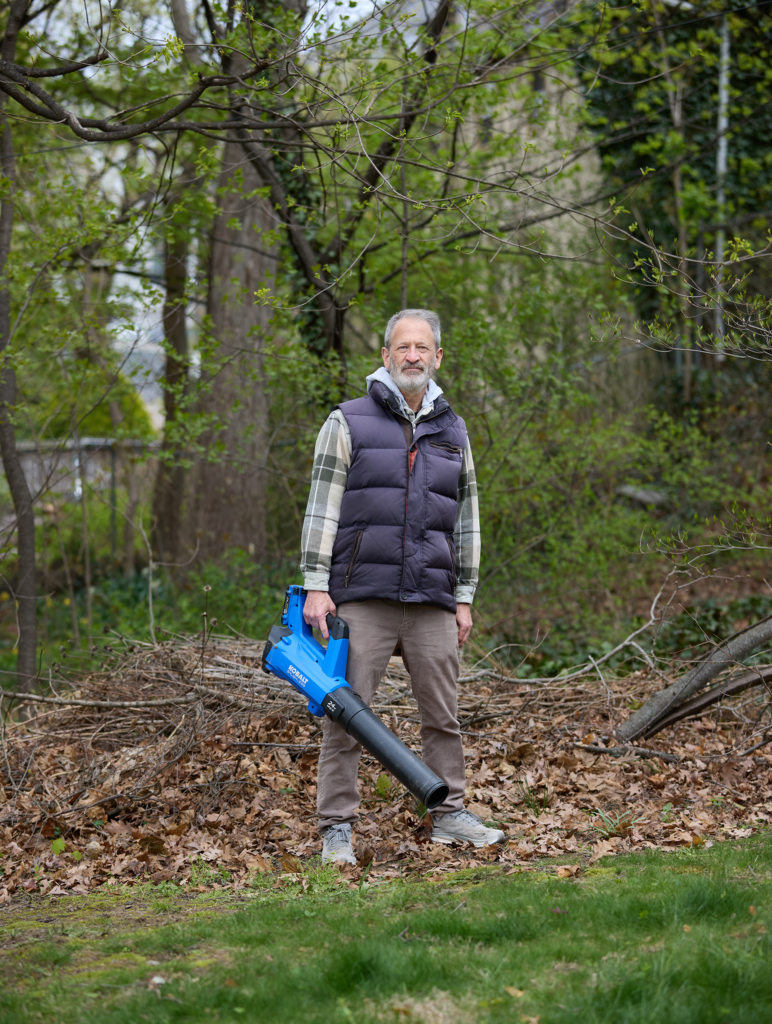It has been five years since the pandemic disrupted Philadelphia’s recycling program, leading to service delays that stretched on for weeks and consigning the contents of so many blue bins into trash trucks headed for the landfill. “That was the first huge blow for an already beleaguered system,” says Nic Esposito, former director of the City’s Zero Waste and Litter Cabinet. The recycling rate — the portion of the total waste the City collects that is recycled — suddenly fell from around 20% to a dismal 8%, erasing years of progress, while residents lost faith that their efforts toward waste reduction were actually being rewarded.
Half a decade later, with a new mayor in office and an outspoken emphasis on a “cleaner, greener Philadelphia,” the stats have improved slightly, but faith has hardly been restored. The City claims a diversion rate of 13.1%, which would place it well behind every major American city except Chicago. Perhaps more damning, those who have devoted decades to ensuring that our materials have a meaningful afterlife don’t believe we’re on a path toward progress.
We have a system driven by the politics of trash, not the practicalities of trash.”
— Maurice M. Sampson II, Clean Water Action
“Recycling will only happen in this city if the mayor is committed to it,” says Maurice M. Sampson II, the Eastern Pennsylvania director of Clean Water Action and the City’s first recycling coordinator from 1985 to 1987. “If you don’t have that commitment, it doesn’t happen, because the Streets Department responds to whatever the mayor wants. We have a system driven by the politics of trash, not the practicalities of trash.”
As the global plastics crisis worsens, landfills run out of space and incinerators like the one in Chester, Delaware County, heap environmental injustice on their neighbors, it has never been more important to keep materials out of the waste stream. And yet Mayor Cherelle Parker’s proposed budget aims for just 1% annual improvements in the City’s recycling rate over the next two years. Without a significant step forward, a citywide composting program to recycle organic waste — the largest component of the municipal solid waste stream, currently destined for landfills — is nothing but a pipe dream, Sampson says.
But if an overwhelmed municipal government isn’t prepared to meet the moment, a collection of private entities and nonprofits stands ready to fill in the gaps, offering residents and businesses the opportunity to escape the single-use paradigm and take matters into their own hands. From construction and demolition debris to glass, food scraps and hard-to-recycle materials, they’re demonstrating the potential for Philadelphia to develop an effective circular economy — if only the City catches on.
“If you have a gold mine, don’t go digging in the sand,” says Alisa Shargorodsky, founder and CEO of reuse-oriented nonprofit ECHO Systems. “I’m really optimistic about the leadership of Philadelphia realizing that they have a gold mine and they need to tap into it. And the gold mine is the community.”
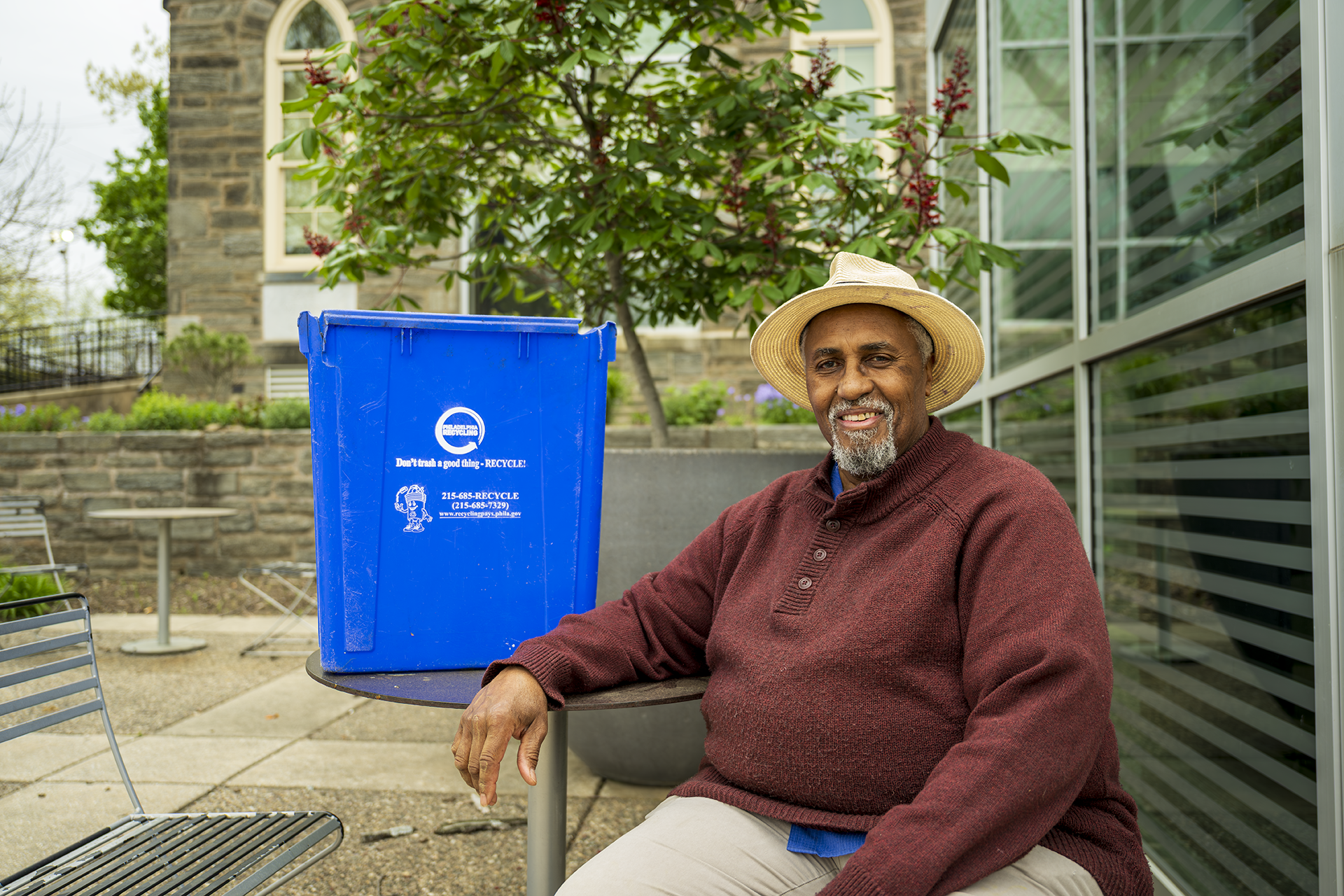
Alone or Together?
The history of recycling in Philadelphia is full of fits and starts, commitments and abnegations, Sampson says. Since his time as recycling coordinator, the City has decided four different times to develop full-scale programs, beginning with a mandatory recycling law that set a target rate of 50% and followed by a solid waste plan in the mid-1990s that projected 40% recovery by 2000. At one point, Philadelphia had “the most sophisticated recycling office in the country,” Sampson says, staffed by more than a dozen employees, plus interns and consultants. They conducted research, outlined short- and long-term plans and managed programs for recycling, education and promotion in residential, commercial and municipal office buildings. When San Francisco and Los Angeles sought to improve their programs, they came here to see innovative ideas in action. But while both now divert roughly 80% of waste, including organic materials, from landfills, Philadelphia’s program has never proved nearly as effective.
Under Mayor Michael Nutter (2008-2016), the City expanded the list of materials it recycled and began weekly collections, resulting in an improved recovery rate that reflected City Hall’s commitment, even if it fell below contemporary standards. But under Mayor Kenney (2016-2024) the commitment wavered, results declined, and then the pandemic dealt a body blow to what remained of the program’s efficacy. Today, we’re picking up the pieces, but our leadership lacks the dedication the moment calls for, according to Sampson.
“The goal of zero waste by 2035 has been abandoned by the current administration,” he says. “There is not a plan for recycling. We’re planning to clean up — and that’s terrific — but there’s no plan or money in the budget or expectation that we are going to go forward on recycling.”
As concerned as recycling advocates are about the City’s failure to outline a clear path toward an improved system, the lack of transparency about the program’s current process and performance only adds to the frustration. As a member for 30-plus years of the Solid Waste and Recycling Advisory Committee, which was organized to advise the City’s waste management efforts, Sampson says he and his colleagues have been working for years to access transparent information about the City’s plans and policies and come up short. Getting accurate data on the recycling program “is like pulling teeth,” agrees Esposito, founder of zero-waste startup Circa Systems. (Esposito is the former director of operations for Grid.)
The City declined to make Kyle Lewis, its recycling program director, available for an interview for this story, instead offering a lengthy statement touting its increased collections staff and efforts to educate residents on what can and cannot be recycled. According to the City, “75 to 86 percent” of the 86,000 tons of recycling collected from July 2023 to July 2024 was processed for resale, with the rest “recycled outside of single stream or sent to a landfill” by Waste Management, the $20 billion company that holds the City’s recycling contract. That contract is up at the end of this year.
Among cities that have found progressive solutions to improve their recycling rates — including Los Angeles, Seattle and San Francisco — few have partnered with Waste Management, Esposito says. That’s due, in part, to the fact that the company makes money from landfills, limiting its interest in improving recycling rates.
“They are not your recycling partner,” Esposito says. “If you look at cities doing well with recycling, they’re getting vendors that have a vested interest in recycling this material.”
If the City takes advantage of the opportunity presented by the growing community of businesses invested in creating a more circular economy, recycling advocates say, something better is possible here, too.
“If you want to go fast, go alone, but if you want to go far, go together,” Shargorodsky says. “That’s something Philadelphia hasn’t done a great job at. And for that reason a lot of organizations struggle unnecessarily because they’re not getting the support that they should.”
Disrupting the System
At the Bok Building in South Philadelphia, Bottle Underground offers a glimpse of what could be. In 2016, Danielle Ruttenberg and Rebecca Davies opened Remark Glass, a glass-blowing company that gives used bottles and jars new artistic forms and keeps them from the waste stream. The community response to creative upcycling was so strong that they founded Bottle Underground four years later, providing residents and businesses a place to drop off used glass to be given new life.
Last year they collected nearly 147,000 pounds of glass that was made into crafts, broken down into glass gravel and sand for gardens, melted down to make new bottles or put directly to reuse with local vendors. Had it been placed into blue bins, all that glass would have been crushed in the back of a truck and likely turned into landfill cover.
For Ruttenberg, the key to improving recycling in Philadelphia lies in “system disruption” — finding better, more creative ways to separate materials and harness their value.
“It takes a new mindset to break the incumbent style that has been the status quo for such a long time,” she says.
Bottle Underground isn’t alone in its effort to develop a new standard. At Rabbit Recycling, businesses and households get complete transparency about the destination of the materials they recycle, whether they’re common items typically found in blue bins or those unwelcome in single-stream programs, such as batteries, Styrofoam, cork and plastic bags — “basically, your junk drawer,” co-owner Matt Siegfried says. Bennett Compost and Circle Compost offer residents five-gallon buckets and regular pickup of the organic materials collected by cities with more effective programs. Revolution Recovery and Richard S. Burns & Company help residents and contractors recycle construction and demolition debris. ECHO, meanwhile, enables restaurants and cafés to reduce their reliance on single-use plastics through a partnership with Re:Dish, which collects and cleans reusable wares.
Those operations, though, are an alternative or supplement to the City-run recycling program — and they put the onus on residents to seek out and pay for the privilege of a more circular economy.
“There’s a weight people carry when they put their recycling out knowing it’s going to the trash,” Siegfried says. “In the city, your taxes go to this and people are choosing us instead, so there’s this humbling feeling that we do have something pretty interesting if people are willing to pay us.”
The Parker administration is doing its best to work with “a messy deal of cards,” Ruttenberg says, but recycling has taken a back seat to cleanup. And with so much interest and energy gathering behind the movement to improve our systems — to treat the recyclables as materials with value, rather than as trash — there’s an opportunity to build on what Bottle Underground and others are doing. Ruttenberg and her colleagues have received visits from City officials over the years, as well as some modest grant funding, but they have a vision for something bigger and more effective that would require full-throated municipal backing.
“They’re just squandering so much opportunity to engage these communities and businesses to improve recycling in Philadelphia,” Esposito says. “That’s where the real solution lies. If you had a creative administration that could figure out a way to contract with these companies, you would set up a national leader for recycling in the United States. It’s frustrating to watch.”
Esposito points to Austin, Texas, and Boulder, Colorado, both of which have passed zero-waste ordinances, as examples for Philadelphia to follow. Both contract with waste management companies for solid waste and single-stream recycling while also working with smaller entities on sustainable management of certain materials. Austin’s diversion rate is almost three times that of Philadelphia; Boulder’s is more than four.
The small businesses pushing recycling forward in Philadelphia understand their collective potential. They’ve discussed what it would look like to work together rather than in their separate silos. If they partnered together, perhaps recycling could thrive here and Philadelphia could look more like the cities that once came here for inspiration.
“The City could get behind all of us and see that the way we operate is a better system,” Ruttenberg says. “We’re not going to jump out of single-stream tomorrow by any means, but I think there is a real opportunity for a circular processing center that would need the City to back us. And that would really bring us into a leadership role in terms of environmentalism.”
Of course, even the most progressive, effective waste management system can only accomplish so much in an era of single-use plastics, ECHO’s Shargorodsky says. As long as packaging products in plastic remains the cheapest option for manufacturers, the tap will continue flowing at an unsustainable rate, bringing with it public health threats ranging from endocrine disruption to the accumulation of microplastics in our brains. Extended producer responsibility laws, like those common in Europe and slowly spreading in the United States, could help stem the plastic tide by making manufacturers responsible for the packaging they use, raising money to fund healthier systems while encouraging producers to contribute to a more circular economy.
“We cannot just be mitigating,” Shargorodsky says. “We need to be really progressively thinking about how to prevent this stuff.”
In the meantime, there are opportunities to improve the status quo in Philadelphia. The issue with recycling isn’t the public, Sampson says, but a municipal mentality driven by sanitation, not material recovery. He’s confident that recycling in Philadelphia has a brighter future, even if the solutions will come from the private sector. If our recycling rate has dwindled, that’s only because the City hasn’t committed to leading the way — and Sampson and others stand ready to push for something better.
Recycling was a central issue in the 2007 mayoral campaign, he says, and the program expanded meaningfully in the ensuing years. Today, illegal dumping has become a priority in much the same way. Tomorrow, perhaps, we’ll restore our focus on keeping recyclable materials out of landfills and microplastics out of our organs — and the results will follow.
“The current situation sounds bleak,” Sampson says, “but the long-term outlook if this is what we want is very doable. We just have to decide it’s what we want to make happen.”


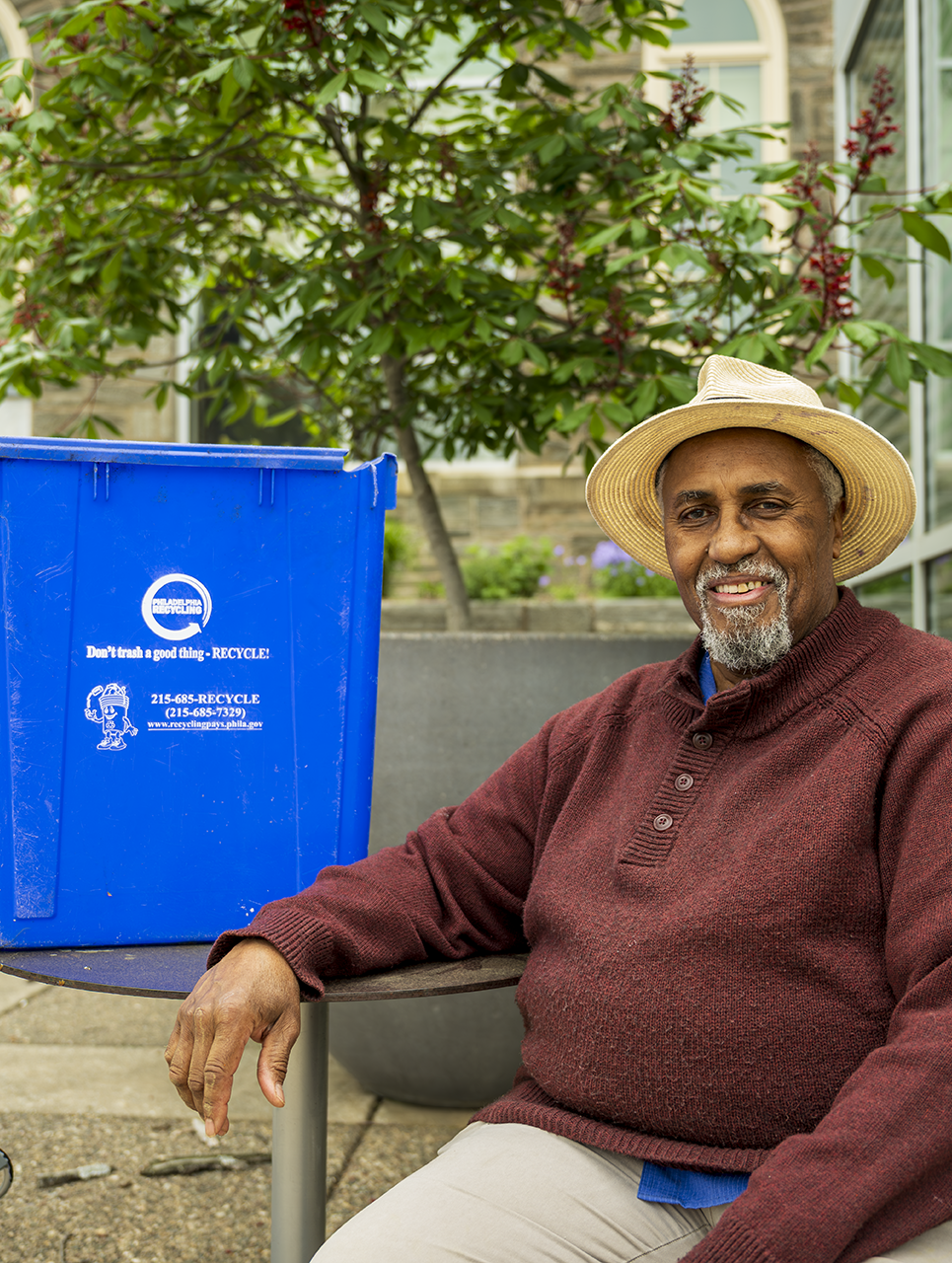
 This special section is a part of Every Voice, Every Vote, a collaborative project managed by The Lenfest Institute for Journalism. The William Penn Foundation provides lead support for Every Voice, Every Vote in 2024 and 2025 with additional funding from The Lenfest Institute for Journalism, Comcast NBC Universal, The John S. and James L. Knight Foundation, Henry L. Kimelman Family Foundation, Judy and Peter Leone, Arctos Foundation, Wyncote Foundation, 25th Century Foundation, Dolfinger-McMahon Foundation, and Philadelphia Health Partnership. To learn more about the project and view a full list of supporters, visit
This special section is a part of Every Voice, Every Vote, a collaborative project managed by The Lenfest Institute for Journalism. The William Penn Foundation provides lead support for Every Voice, Every Vote in 2024 and 2025 with additional funding from The Lenfest Institute for Journalism, Comcast NBC Universal, The John S. and James L. Knight Foundation, Henry L. Kimelman Family Foundation, Judy and Peter Leone, Arctos Foundation, Wyncote Foundation, 25th Century Foundation, Dolfinger-McMahon Foundation, and Philadelphia Health Partnership. To learn more about the project and view a full list of supporters, visit 